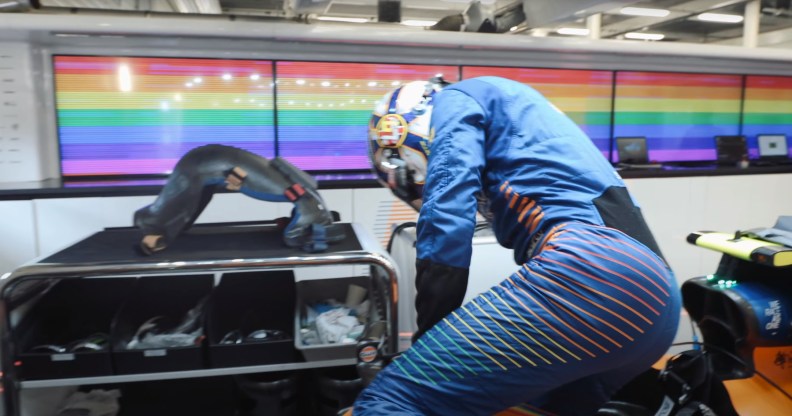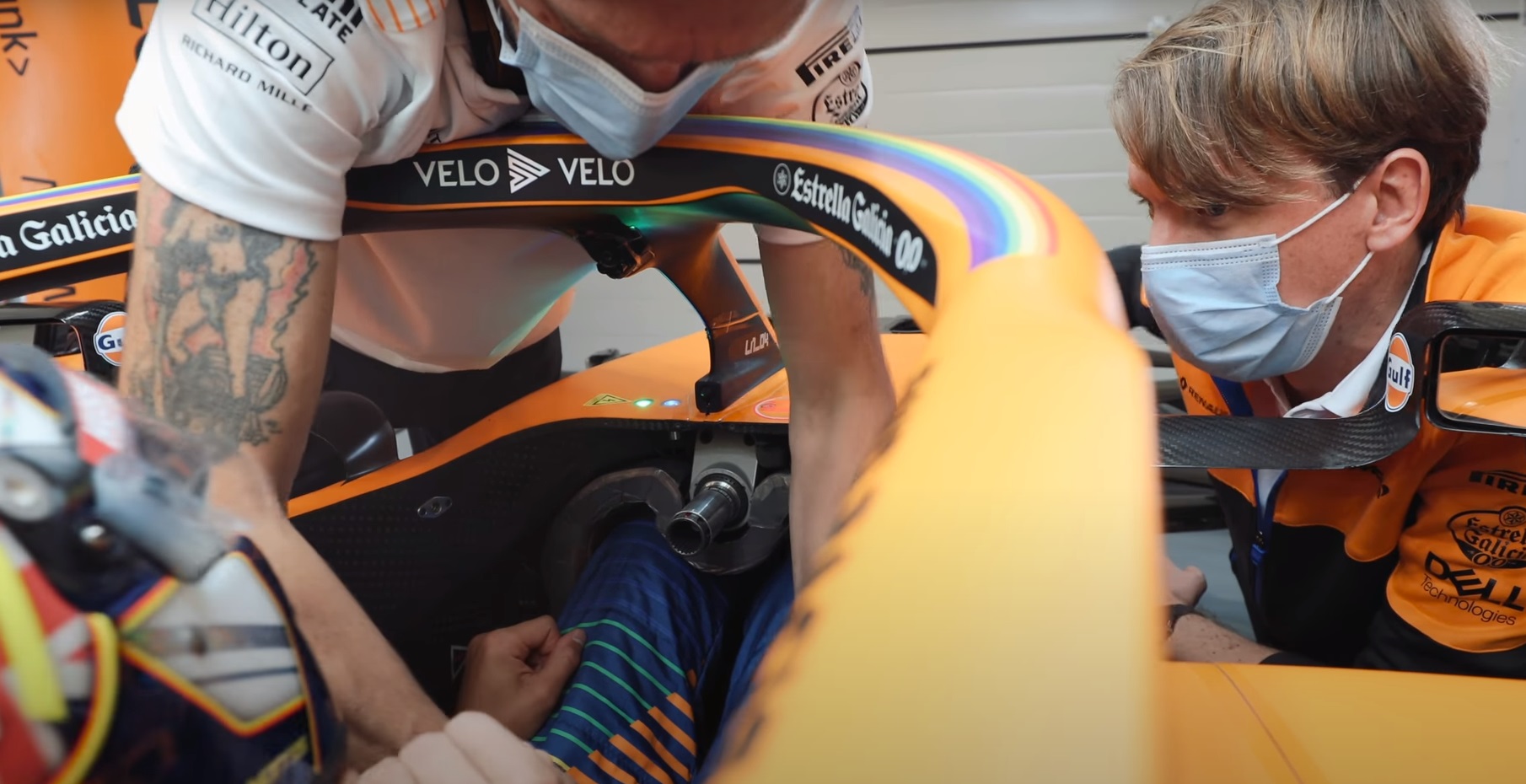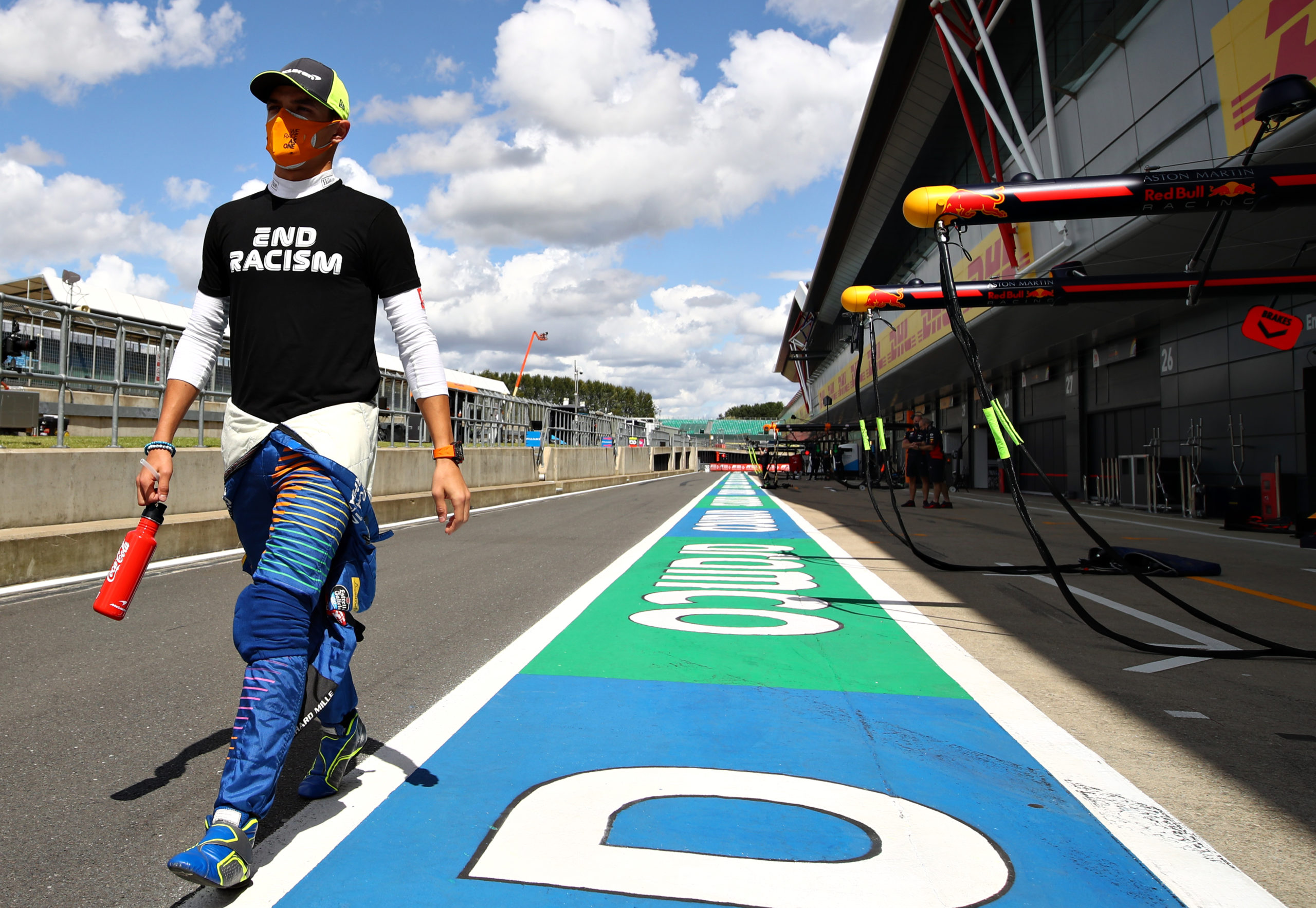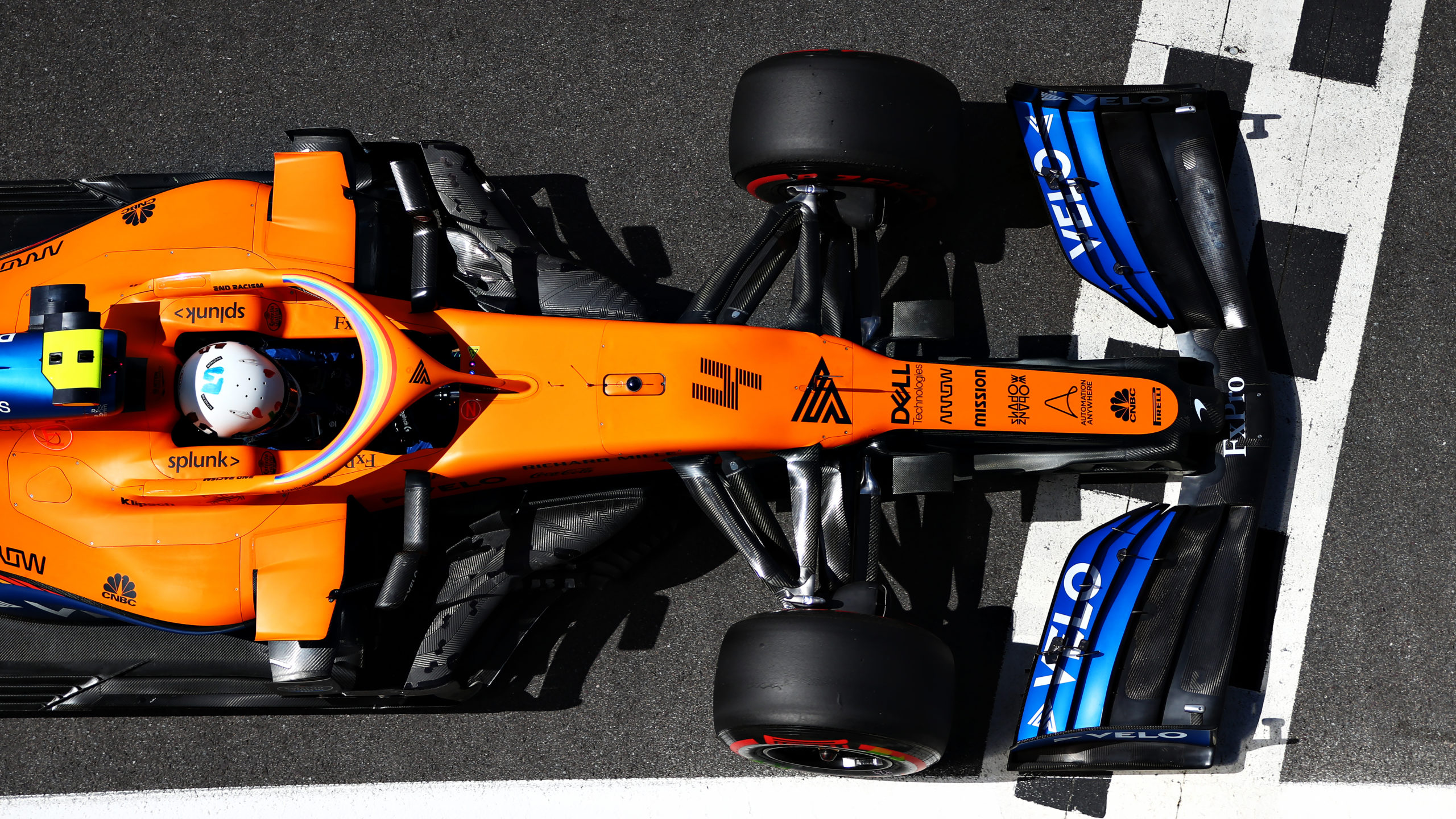F1 driver Lando Norris has an amazing rainbow race suit – but apparently it’s a ‘universal symbol of unity’ for coronavirus key workers

Formula 1 driver Lando Norris has donned a new rainbow-themed race suit, but apparently it’s not intended to be a symbol for LGBT+ rights.
Formula 1 driver Lando Norris has shown off his rainbow-themed race suit, but apparently it’s not intended to be a symbol for LGBT+ rights.
A clip on McLaren’s YouTube channel spotted by race fans on Tumblr gave a close-up view of the driver decked out with rainbow stripes across his outfit in place of the usual orange ones while his McLaren MCL35 seat is fitted.
The outfit matches the rainbow livery on the vehicle, first announced in June and seen in recent Grand Prix events, while screens in the background display rainbow banners.
Fans get the wrong message from Lando Norris rainbow suit
While most people would interpret the rainbow flag as a show of support for the LGBT+ community, an ambiguously-worded statement from McLaren attempts to ride two horses by noting the symbol’s use for essential workers while also making references to the concept of “diversity”.

The car livery also features a rainbow flag
The original announcement from McLaren in June, reflecting an F1-wide campaign, said: “During the coronavirus crisis, the rainbow has been a universal symbol of unity, solidarity and hope, while recognising those key workers putting their lives at risk to save others. The rainbow will be a notable feature on the halos of the McLaren MCL35s and race suits of Lando Norris and Carlos Sainz, emulating the images seen in millions of households globally.
“In parallel, McLaren will stand alongside Formula 1 on the return to track to support its ‘End Racism’ message, which will be carried on both McLaren race cars at the Austrian Grand Prix.
“McLaren has also pledged its support to the Formula 1 task force and is already engaged with F1 to help progress the agenda of diversity, inclusion and opportunity across the sport in all its forms, aligning with McLaren Racing’s own redoubled efforts to advance its long-term diversity programme.”
Zak Brown, CEO at McLaren Racing, said: “We fully support Formula 1 on the #WeRaceAsOne campaign as we return to racing. Formula 1 and McLaren have a truly worldwide audience, and we recognise that our return to the track is a huge opportunity for our sport to make an impact at a global level, helping those most affected by the COVID-19 crisis and standing together against the blight of racism, as we work steadfastly to build an even stronger culture of diversity, inclusion and equality in our team and our sport.”

Lando Norris of Great Britain and McLaren F1 walks to the grid before the F1 Grand Prix of Great Britain at Silverstone on August 2 (Mark Thompson/Getty Images)
According to Formula 1, the #WeRaceAsOne campaign is “aimed at tackling the biggest issues facing the sport and global communities – the fight against COVID-19 and the condemnation of racism and inequality.”
It said: “Formula 1 will be saying thank you to key workers and individuals around the world by displaying rainbows on the Formula 1 cars and around the race circuit with the hashtag #WeRaceAsOne. The rainbow has been chosen as it has become a symbol used internationally in the recent crisis to bring communities together. We believe this important gesture will encourage our fans to join us in saying thank you. The rainbow initiative will continue throughout the season.”

Lando Norris of Great Britain driving the McLaren F1 Team MCL35 Renault during qualifying for the F1 Grand Prix of Great Britain at Silverstone on August 1 (Dan Istitene – Formula 1/Formula 1 via Getty Images)
Rainbow flag use during coronavirus crisis has made some uncomfortable
The rapid adoption of rainbows as a symbol during the pandemic has caused discomfort among some LGBT+ activists, who have criticised the “appropriation” of the rainbow flag, designed by Gilbert Baker as a symbol of the gay rights movement in 1978.
In May, a UK bus company faced criticism after rededicating the company’s rainbow-striped Pride bus as an “NHS bus” with the message “Thank you NHS and key workers”. Meanwhile, Pride flags were rebranded and sold online as “Thank you NHS” flags.
Many businesses displaying rainbows for key workers have sought to make the distinction clear – for instance by using visually-distinct variants separate from the LGBT+ rainbow flag.
The seven-stripe design used by McLaren is technically distinct from the modern six-stripe LGBT+ variant, but is ironically near-identical to one of the early designs for the Baker’s flag.

